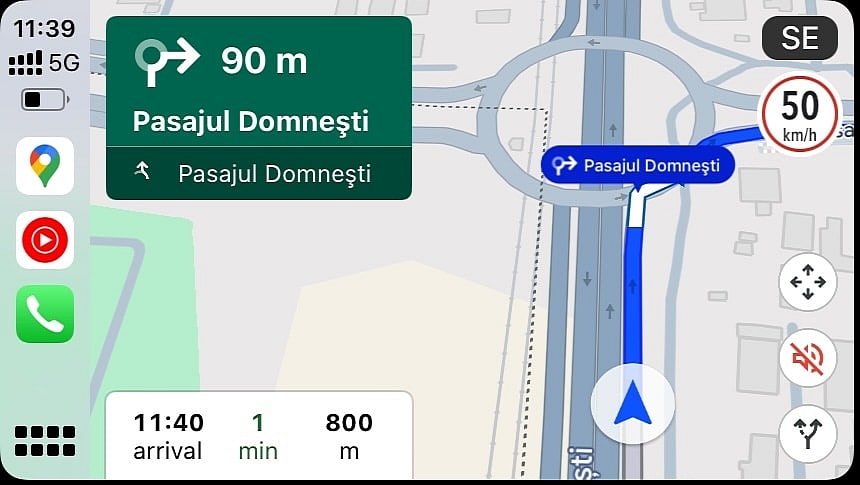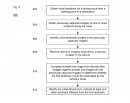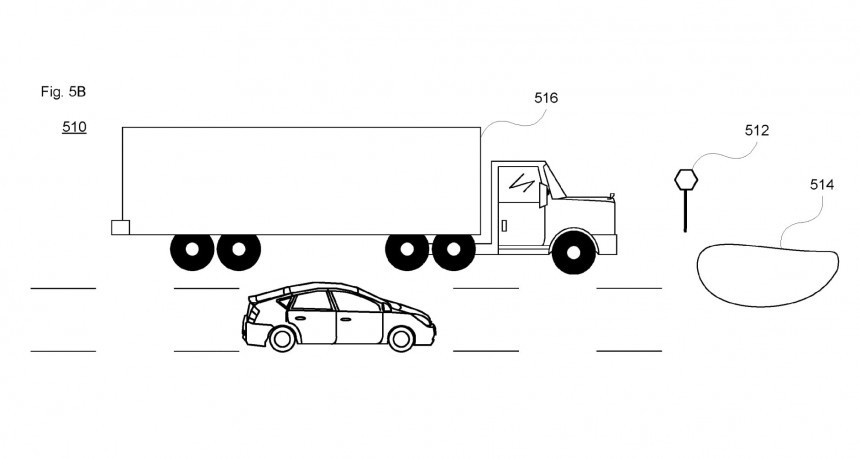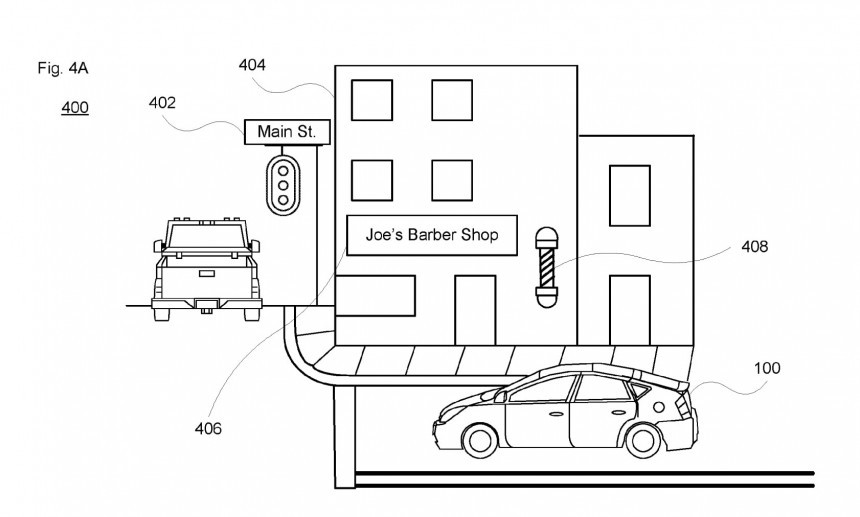Nobody likes to drive in heavy rain or during a snowstorm, not only because of the obvious hazards but also because seeing the place they're looking for on the side of the road is more difficult.
Imagine you're dealing with heavy rain when trying to find a new restaurant. Despite using navigation software like Google Maps and Waze, taking your eyes off the road and looking for nearby restaurants is dangerous, especially because rain makes it difficult to see anything on the side of the road.
The same thing happens to everything a driver must see when driving to a destination under difficult conditions.
Adverse weather conditions could impact the driver's ability to observe important information, such as the street signs or landmarks that are critical to finding a destination. Navigation apps could offer guidance to help find a destination, but due to bad weather, low light conditions, and temporary obstacles, the driver could miss the address.
This is an issue Google plans to address with a new idea called "enhanced navigation instructions with landmarks under difficult driving conditions."
The company recently filed a patent for a technology whose role is to help drivers find their destinations even when their sight is obstructed due to various factors, including bad weather.
The first part of the new technology is determining that the driver faces adverse weather conditions and certain information, such as street signs and landmarks, are obstructed. Google Maps offers turn-by-turn guidance and includes details that could help the driver find their destination. If these details cannot be observed, the application no longer serves its purpose correctly.
Google proposes an approach that relies on onboard systems to help Google Maps determine the driving conditions. One concept allows the vehicle-integrated Google Maps to receive real-time data from cameras installed on the car. The application can compare a live image with an existing database, therefore trying to determine if landmarks are visible. If they're not, the application activates an enhanced navigation mode that offers additional information and sometimes suggests other landmarks or visible details to help drivers determine which way they must go.
A Google Maps version with deeper vehicle integration is only possible via Android Automotive. The navigation app is already available on Google's embedded operating system, mainly installed in EVs, getting access to battery data and other car information. Thanks to the extra information it can read, Google Maps can monitor the battery range and suggest charging stops along the route when the battery level doesn't allow the driver to arrive at the destination with the existing charge. Starting this year, Google Maps on Android Automotive will also suggest nearby compatible charging stations when the battery level drops below a pre-defined setting.
Google says that the driver must configure navigation to a desired destination and let Google Maps obtain previously captured imagery of one or more locations along the route. The application would be able to identify a landmark included in the imagery automatically. Using real-time imagery from a camera located in the vehicle, Google Maps would instantly conduct an analysis, with a comparison between the two images helping the app determine whether a landmark would be observable by the driver.
If the application determines that the driver might not see the landmark included in the navigation directions, Google Maps can "modify the initial directions to indicate at least one other landmark."
Google's new technology could be expanded to work in every scenario where the driver's sign could be obstructed. For example, if you drive by a lorry that doesn't allow you to observe a landmark or a street sign, Google Maps could adjust its directions in real time to provide updated guidance using elements you can see from your location and angle.
The system would work similarly when driving in low-light conditions and at night. Because you might not be able to observe certain information included in Google Maps' navigation guidance, the application would use images from your car's camera to scan your surroundings for landmarks that would improve the navigation experience.
While this technology is a brilliant way to make navigation more convenient and straightforward, it's important to remember that Google's proposed technology is currently in the patent stage. It means the work on its development hasn't even started, and there's no guarantee the search giant would pursue this idea. Companies sometimes patent new technologies just to make sure competitors don't create something similar, so it's impossible to tell if Google is committed to bringing this enhanced navigation system to production devices anything soon.
Meanwhile, you can find the full patent application, which also includes more technical details about how the improved navigation experience would work in adverse weather conditions, in the box after the jump. The patent was issued on April 30, so we're still in its early days, should Google plan to develop a production version of the technology.
The same thing happens to everything a driver must see when driving to a destination under difficult conditions.
Adverse weather conditions could impact the driver's ability to observe important information, such as the street signs or landmarks that are critical to finding a destination. Navigation apps could offer guidance to help find a destination, but due to bad weather, low light conditions, and temporary obstacles, the driver could miss the address.
The company recently filed a patent for a technology whose role is to help drivers find their destinations even when their sight is obstructed due to various factors, including bad weather.
The first part of the new technology is determining that the driver faces adverse weather conditions and certain information, such as street signs and landmarks, are obstructed. Google Maps offers turn-by-turn guidance and includes details that could help the driver find their destination. If these details cannot be observed, the application no longer serves its purpose correctly.
Google proposes an approach that relies on onboard systems to help Google Maps determine the driving conditions. One concept allows the vehicle-integrated Google Maps to receive real-time data from cameras installed on the car. The application can compare a live image with an existing database, therefore trying to determine if landmarks are visible. If they're not, the application activates an enhanced navigation mode that offers additional information and sometimes suggests other landmarks or visible details to help drivers determine which way they must go.
A Google Maps version with deeper vehicle integration is only possible via Android Automotive. The navigation app is already available on Google's embedded operating system, mainly installed in EVs, getting access to battery data and other car information. Thanks to the extra information it can read, Google Maps can monitor the battery range and suggest charging stops along the route when the battery level doesn't allow the driver to arrive at the destination with the existing charge. Starting this year, Google Maps on Android Automotive will also suggest nearby compatible charging stations when the battery level drops below a pre-defined setting.
If the application determines that the driver might not see the landmark included in the navigation directions, Google Maps can "modify the initial directions to indicate at least one other landmark."
Google's new technology could be expanded to work in every scenario where the driver's sign could be obstructed. For example, if you drive by a lorry that doesn't allow you to observe a landmark or a street sign, Google Maps could adjust its directions in real time to provide updated guidance using elements you can see from your location and angle.
The system would work similarly when driving in low-light conditions and at night. Because you might not be able to observe certain information included in Google Maps' navigation guidance, the application would use images from your car's camera to scan your surroundings for landmarks that would improve the navigation experience.
Meanwhile, you can find the full patent application, which also includes more technical details about how the improved navigation experience would work in adverse weather conditions, in the box after the jump. The patent was issued on April 30, so we're still in its early days, should Google plan to develop a production version of the technology.










